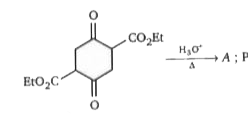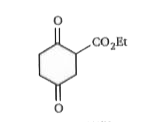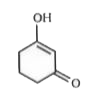Name the products obtained when limestone is calcined.
To solve the question, "Name the products obtained when limestone is calcined," we can follow these steps:
1. Understand the Process of Calcination:
- Calcination is the process of heating a solid material to a high temperature in the absence or limited amount of air or oxygen. This process is often used to remove impurities from the material.
2. Identify the Chemical Composition of Limestone:
- Limestone is primarily composed of calcium carbonate, which has the chemical formula CaCO₃.
3. Heat the Limestone:
- When limestone (CaCO₃) is heated, it undergoes a thermal decomposition reaction. This means that it breaks down into simpler substances when exposed to high temperatures.
4. Determine the Products of the Reaction:
- The thermal decomposition of calcium carbonate (CaCO₃) produces two main products:
- Calcium oxide (CaO), commonly known as quicklime.
- Carbon dioxide (CO₂), which is a gas.
5. Write the Balanced Chemical Equation:
- The reaction can be represented by the following balanced equation:
CaCO3(s)→CaO(s)+CO2(g)
6. Conclude the Products:
- Therefore, the products obtained when limestone is calcined are:
- Calcium oxide (CaO)
- Carbon dioxide (CO₂)
Final Answer:
The products obtained when limestone is calcined are calcium oxide (CaO) and carbon dioxide (CO₂).
---
- Calcination is the process of heating a solid material to a high temperature in the absence or limited amount of air or oxygen. This process is often used to remove impurities from the material.
- Limestone is primarily composed of calcium carbonate, which has the chemical formula CaCO₃.
- When limestone (CaCO₃) is heated, it undergoes a thermal decomposition reaction. This means that it breaks down into simpler substances when exposed to high temperatures.
- The thermal decomposition of calcium carbonate (CaCO₃) produces two main products:
- Calcium oxide (CaO), commonly known as quicklime.
- Carbon dioxide (CO₂), which is a gas.
- The reaction can be represented by the following balanced equation:
CaCO3(s)→CaO(s)+CO2(g)
- Therefore, the products obtained when limestone is calcined are:
- Calcium oxide (CaO)
- Carbon dioxide (CO₂)
The products obtained when limestone is calcined are calcium oxide (CaO) and carbon dioxide (CO₂).
Topper's Solved these Questions
- BOOK - ICSECHAPTER - METALLURGYEXERCISE - QUESTIONS FOR PRACTICE ON EXAMINATION PATTERN38videos
METALLURGY
- BOOK - ICSECHAPTER - METALLURGYEXERCISE - QUESTIONS FOR PRACTICE ON EXAMINATION PATTERN (Answer the following question in one word or one sentence)14videos
METALLURGY
- BOOK - ICSECHAPTER - METALLURGYEXERCISE - QUESTIONS127videos
METALLURGY
- BOOK - ICSECHAPTER - ELECTROLYSISEXERCISE - Assertion and Reason Based Questions4videos
ELECTROLYSIS
- BOOK - ICSECHAPTER - MODEL PAPER -1EXERCISE - SECTION -II48videos
MODEL PAPER -1
Similar Questions
Knowledge Check
- Question 1 - Select One
 , Products obtained are : ARacenicBDiastereomersCG.IDPositional isomers
, Products obtained are : ARacenicBDiastereomersCG.IDPositional isomers - Question 2 - Select One
 , Product obtained is :A
, Product obtained is :A B
B C
C DNone of these
DNone of these

The product obtained is/areView SolutionName the products obtained by:
heating mixture of calcium formate and calcium acetate.View SolutionWrite down the structures and names of the products obtained when D-glucose is treated with
(i) acetic anhydride
(ii) hydrocyanic acid
(iii) bromine
(iv) conc. HNO3 and
(v) HI.View SolutionName the major product obtained when an alkyl halide is treated with silver cyanide.
View SolutionName the products obtained by:
heating calcium formateView SolutionWrite the structure of the product obtained when glucose is oxidised with nitric acid .
View Solution


